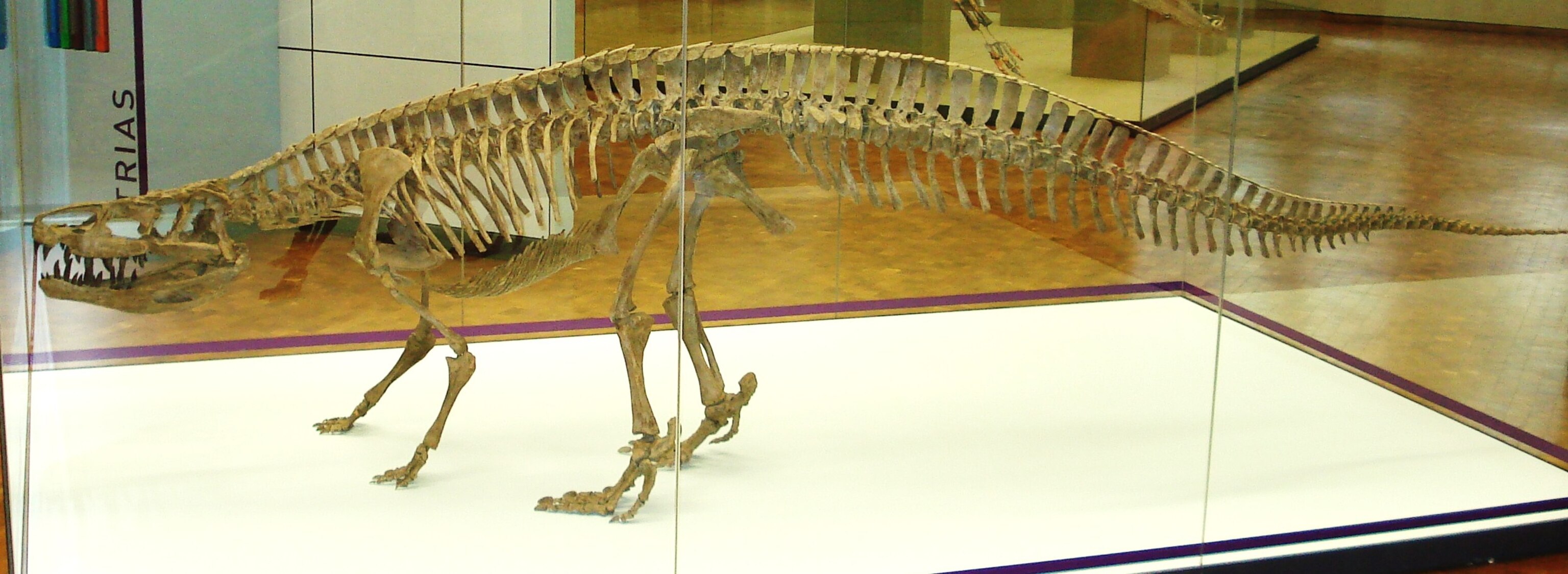Halticosaurus orbitoangulatus never had much hope of being a household name. The supposed dinosaur’s name lacked the gravitas of Tyrannosaurus rex or Apatosaurus ajax, not to mention that the animal was only known from fragments found in the Late Triassic rock of Germany. The fact that experts almost entirely forgot about the fossil didn’t help, either. Poor Halticosaurus was sidelined as a poorly-known, archaic theropod dinosaur. When paleontologists Hans-Dieter Sues and Rainer Schoch took another look at the recently re-prepared bones of the animal, though, they found a surprise. Halticosaurus wasn’t a dinosaur, after all.
In 1932, the paleontologist Friedrich von Huene described a beat-up, but associated, skull found in the 228-208 million year old strata in the vicinity of Pfaffenhofen, Germany. Huene thought the bones belonged to some sort of theropod dinosaur – similar to Coelophysis from Triassic North America – but that was virtually all that could be said on the basis of such limited material. He named the fossil as a new species of Halticosaurus, a dinosaur whose remains were found in the same strata.
Now that additional rock has been delicately cleaned from the bone, the nature of Halticosaurus is clearer. The animal was more closely related to crocodiles than dinosaurs. Researchers suspected this before the paper by Sues and Schoch, but the new study provides the detailed proof of relationships that moves the creature from one side of the archosaur family tree to the other. In particular, the shape and anatomy of two particular skull bones – the squamosal and jugal – are all wrong for a theropod dinosaur, and instead resemble the corresponding bones of early crocodile relatives called loricatan pseudosuchians (say that ten times fast). Rather than being anything like a crocodile of modern aspect, though, this animal was most similar to an extinct form called Batrachotomus – a terrestrial predator with a deep, boxy skull who pursued prey on erect limbs.
Since the name Halticosaurus already applies to another possible dinosaur from the same deposits, Sues and Schoch propose a new name for the confounding material they redescribed. The creature is now Apatosuchus orbitoangulatus, the rightly-named “deceptive crocodile.” That’s a wonderfully evocative name, but not the first time a croc cousin has fooled paleontologists.
In dinosaur books I read when I was a child, the menacing Teratosaurus was sometimes presented as an early dinosaurian carnivore. By 1981, however, the ragged-toothed predator was discovered to be a pseudosuchian. More recently, a Triassic predator named Smok was initially presented as a terrifying theropod only to be later cast as a curious crocodile relative, and Triassic bone fragments thought to have pinned down other Triassic dinosaurs may actually give away other strange pseudosuchians.
Looking at the dinosaurs and pseudosuchians alive today – birds and crocodylians, respectively – it’s hard to imagine how the two lineages would be confused. But back in the Triassic, the pseudosuchians were exceptionally dinosaur-like. Some even ran around on two legs and were perfectly bizarre dinosaur mimics. Evolution caused early dinosaurs and some pseudosuchians to converge on similar postures and body plans; the essential differences between the two come down to subtle osteological distinctions that require encyclopedic anatomical knowledge to spot. Apatosuchus may be the deceptive crocodile, but it was not the only one.
Reference:
Sues, H., Schoch, R. 2013. Reassessment of cf. Halticosaurus orbitoangulatus from the Upper Triassic (Norian) of Germany – a pseudosuchian, not a dinosaurReassessment of cf. Halticosaurus orbitoangulatus from the Upper Triassic (Norian) of Germany – a pseudosuchian, not a dinosaurReassessment of cf. Halticosaurus orbitoangulatus from the Upper Triassic (Norian) of Germany – a pseudosuchian, not a dinosaur. Zoological Journal of the Linnean Society. 168: 859-872
